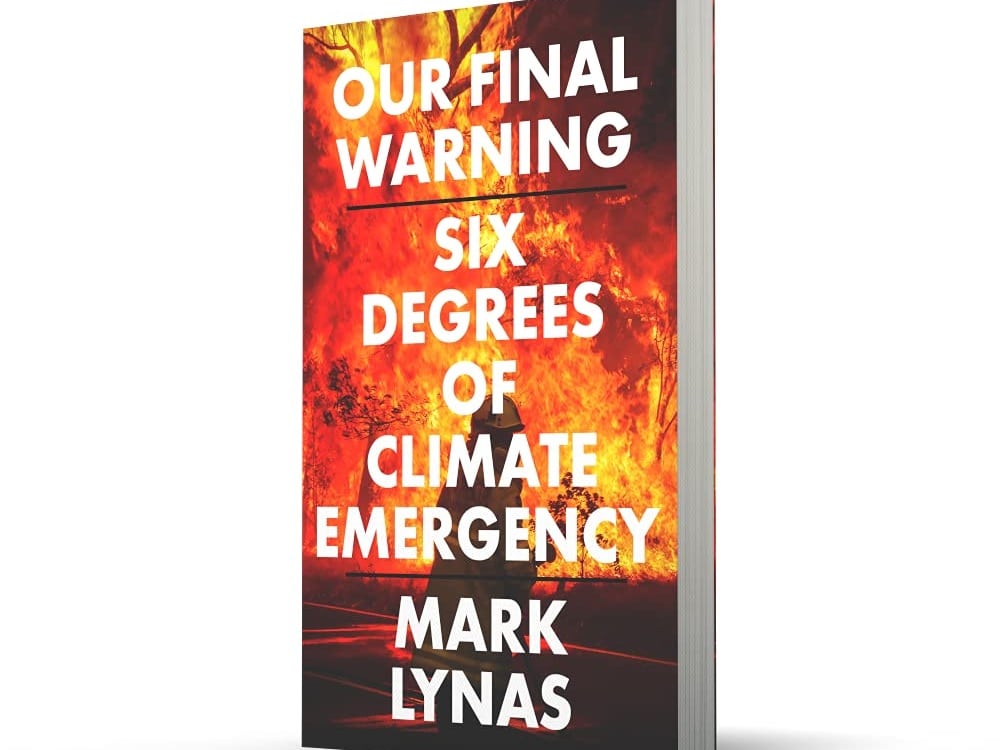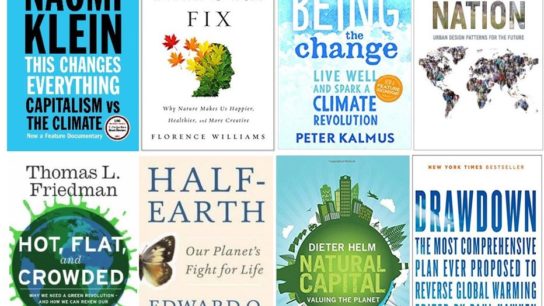What would 2C of global warming actually mean for us? Why is the climate system so fragile? Why is biodiversity so valuable to humans? Environmental science can be very complicated, but a solid understanding of its basics can help put into perspective how climate change affects us, how serious it is, and what can be done about it. Here is our selection of the seven best, must-read and accessible books on environmental science.
—
Best Books on Environmental Science
The Sixth Extinction: An Unnatural History, by Elizabeth Kolbert (2014)
There have been five mass extinction events throughout the history of life on Earth. Each time, biodiversity experienced a steep nosedive, wiping out abnormal amounts of species from the face of the planet. History’s major extinction events happened because of natural events like shifts in the Earth’s climate or incidents like asteroid strikes, but since humans began exercising our heavy grip on the planet, we may have inadvertently kicked off the sixth of these mass extinction events.
In her Pulitzer Prize-winning work and arguably one of the best books on environmental science, Elizabeth Kolbert reports from the front line of biodiversity disappearance and ecological loss. By 2050, climate change may have driven the extinction of up to half of the world’s species, a cataclysmic event initiated entirely by human development. Deforestation, sea level rise and most of all, greenhouse gas emissions are driving this mass extinction. What do we stand to lose? And what can we do to slow the pace of extinction?
Writing with an unmatched entertaining and ironic voice, Kolbert also taps into the complex emotions that inevitably accompany witnessing such a tragedy, and asks the biggest question that is increasingly difficult to answer. If this extinction comes to pass, then that will surely be the firmest imprint humanity could make on our planet. Are we okay with that being our most lasting legacy?
Gaia: A New Look at Life on Earth, by James Lovelock (1979)
Authored by one of the world’s first true academic environmentalists, Gaia remains a highly influential book to this day and a topic of fervent debate amongst scientists and non-scientists alike. This book is the first to articulate and popularise the Gaia hypothesis, formulated by Lovelock himself, which suggests that all the living organisms on the planet interact with their surrounding environment to form a self-regulating system. Consequently, this leads to climactic and biochemical conditions that make life on Earth possible at all. Life on Earth essentially functions as a single organism, a complex and semi-sentient being that is inherently fragile.
Written for non-scientists, Gaia changed conventional opinions on how organic matter interacts with the environment. Lovelock dissects the compelling evidence that makes the Gaia hypothesis credible, as well as making several predictions that have since proven true. Gaia presents readers the science that proves the Earth is a living, complex, and fragile thing, and makes an impassioned case for its protection.

Basing his work on countless academic papers and the latest climate science, Mark Lynas succinctly describes what our world will look like for each degree of warming that we encounter.
Each chapter in his book adds another degree of warming, and Lynas breaks down this world by the diverse set of natural disasters, human impacts and erratic climate conditions that will accompany a warmer planet. From 1C of warming, the world we live in right now, right up to a hellish 6C world, Lynas escalates the tension and the consequences of a world that becomes mountingly unliveable.
Lynas makes it clear that we can still avoid these future consequences as long as we take action now, and outlines the key changes we have to make if we want to stand a chance of keeping temperature rise at manageable levels. If you are looking for a book that breaks down the latest climate science on what we should expect from global warming, this one’s for you.
For Earth.Org’s review of Our Final Warning, click here.
Half-Earth: Our Planet’s Fight for Life, by Edward O. Wilson (2016)
A seminal book by one of the world’s greatest biologists and multiple Pulitzer Prize winner, Half-Earth essentially proposes that we set aside half of the Earth’s surface as a human-free reserve dedicated to preserving biodiversity. While that may sound like a laughable suggestion, Wilson draws on decades of research and experience to explain why, exactly, such an initiative would be successful.
What Wilson sets out is not only a realistic plan to protect global biodiversity, it is perhaps the best explainer for why we need to do this. Thriving biodiversity is essential to a thriving human civilisation, and avoiding biological extinction is critical if we want to avoid our own. Wilson provides a detailed scientific underpinning for his proposal, while also impassionately calling for the preservation of the natural world, making this our pick for one of the best books on environmental science.

Tackling climate change requires changes in our policies, behaviours and our economies. The future on the other side of this transition is bright, but how do we get there? What are the technologies and instruments we need to bring us into the future?
These are the questions tech godfather Bill Gates attempts to answer in this book. A man passionate about climate solutions and the promise of innovation, Gates delves into the challenges we face, and what role technology can play in averting them. With valuable input from fields as disparate as chemistry, physics, engineering and politics, this is an authoritative book, one that answers many questions its audience will have on how exactly these new technologies work.
The World Without Us, by Alan Weisman (2007)
Weisman’s The World Without Us is largely a thought experiment. It asks the question as to what the world would look like if we, humans, suddenly disappeared from it. What would happen to nature? To our cities? To all the things we left behind?
The depth of humanity’s encroachment upon nature is hard to really imagine. We have built so much, and we have left footprints that will stay for generations to come. To really put into perspective how much human activity has affected the natural world, The World Without Us takes a step back and looks at how the world would react to our disappearance. How long would it take for nature to reclaim our cities? How will surviving species fare, and eventually evolve? And what will be the most lasting legacies of humanity on this planet?
Steeped in a scientific understanding of the power of the natural world and the extent of humanity’s impact, The World Without Us creates a surreal and fantastical world to present what humanity’s relationship with nature really means.
Walden, by Henry David Thoreau (1854)
Written in the 1850s, it may come as a surprise to see Thoreau’s famed work appear on a list of best books on environmental science. When Thoreau wrote this book, there was no knowledge of climate change, accelerated biodiversity loss and future scenarios of global warming. This is an introspective work composed during a transformative time, which highlights humanity’s affinity for the natural world and the intersection between science and pure poetry.
Written in Thoreau’s inimitable transcendentalist style, Walden is at its core a simple reflection on living in nature, at a time when the rest of the world was moving en masse to densely populated cities for the first time. On its surface, Walden is about finding meaning, purpose and independence, framed in an autobiographical story of Thoreau living in quiet solitude in the woodlands by Walden Pond in rural Massachusetts for two years.
While Walden dabbles in the philosophy of simplicity, interlinked throughout the story is a smart and at times groundbreaking ecological analysis. Thoreau performed and articulated a detailed and poetic scientific examination of plant and animal life, accurately describing the behaviour of water bodies and understanding how seasons influenced the local climate and ecology. Walden is seminal for the time it was written in, and how it masterfully interlinked science with poetry and human emotion. It is one of the first, and best, books that artfully describe how humans can live sustainably with nature, and how the two can help each other thrive.














